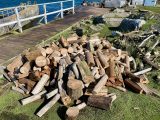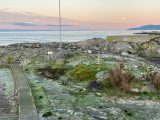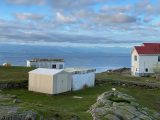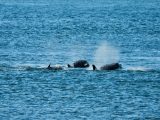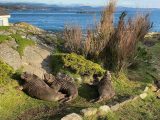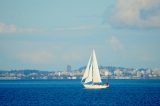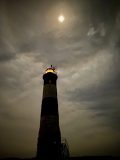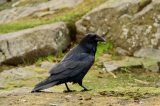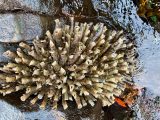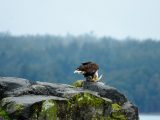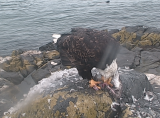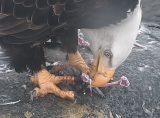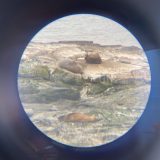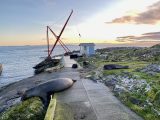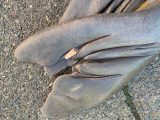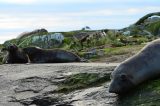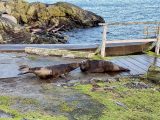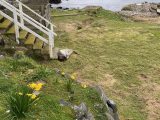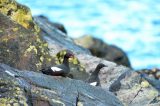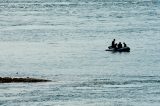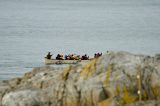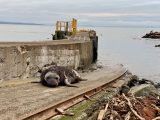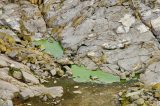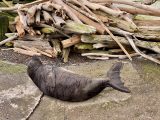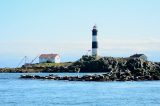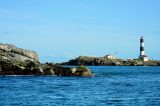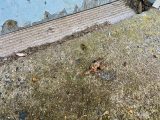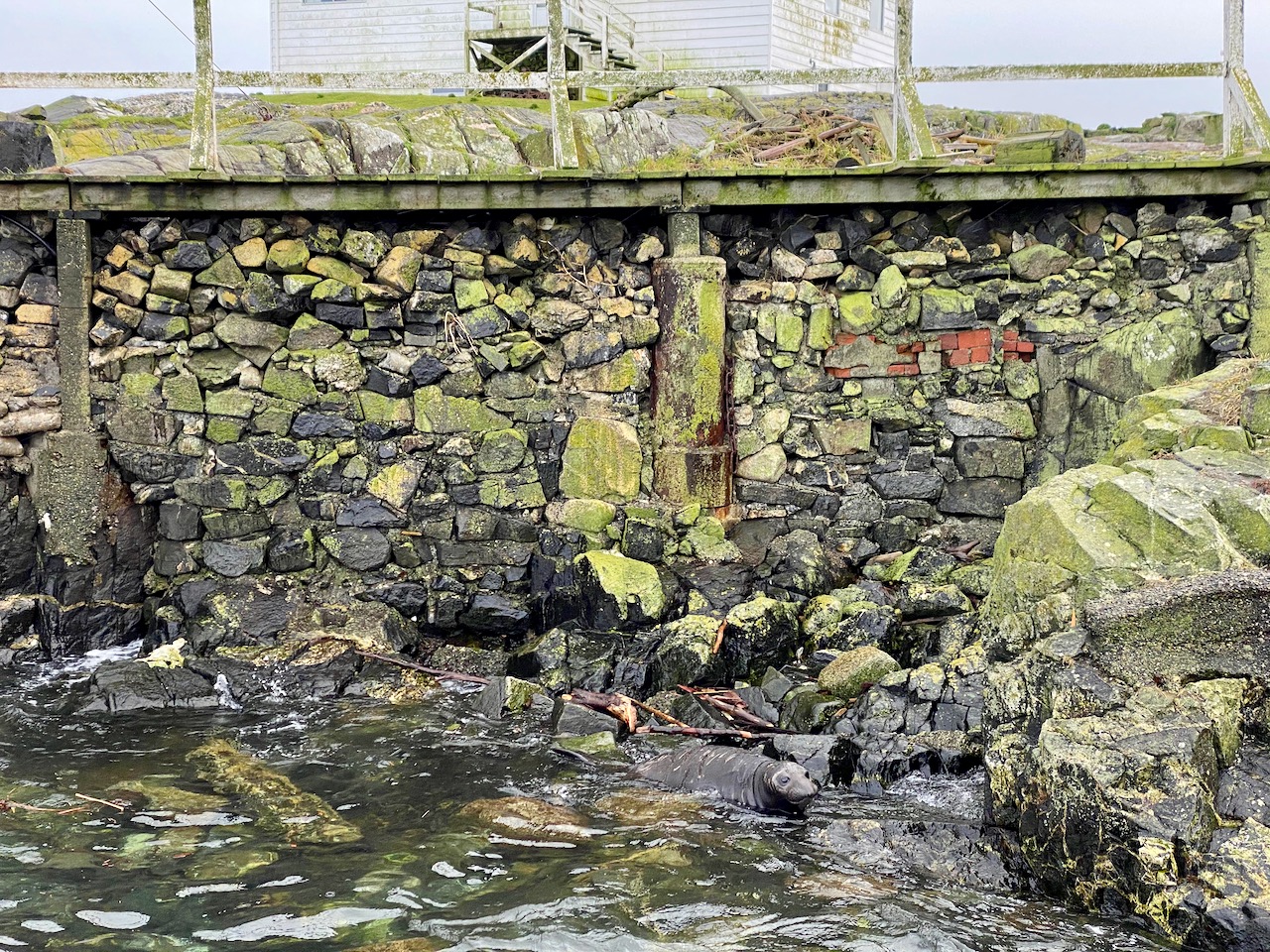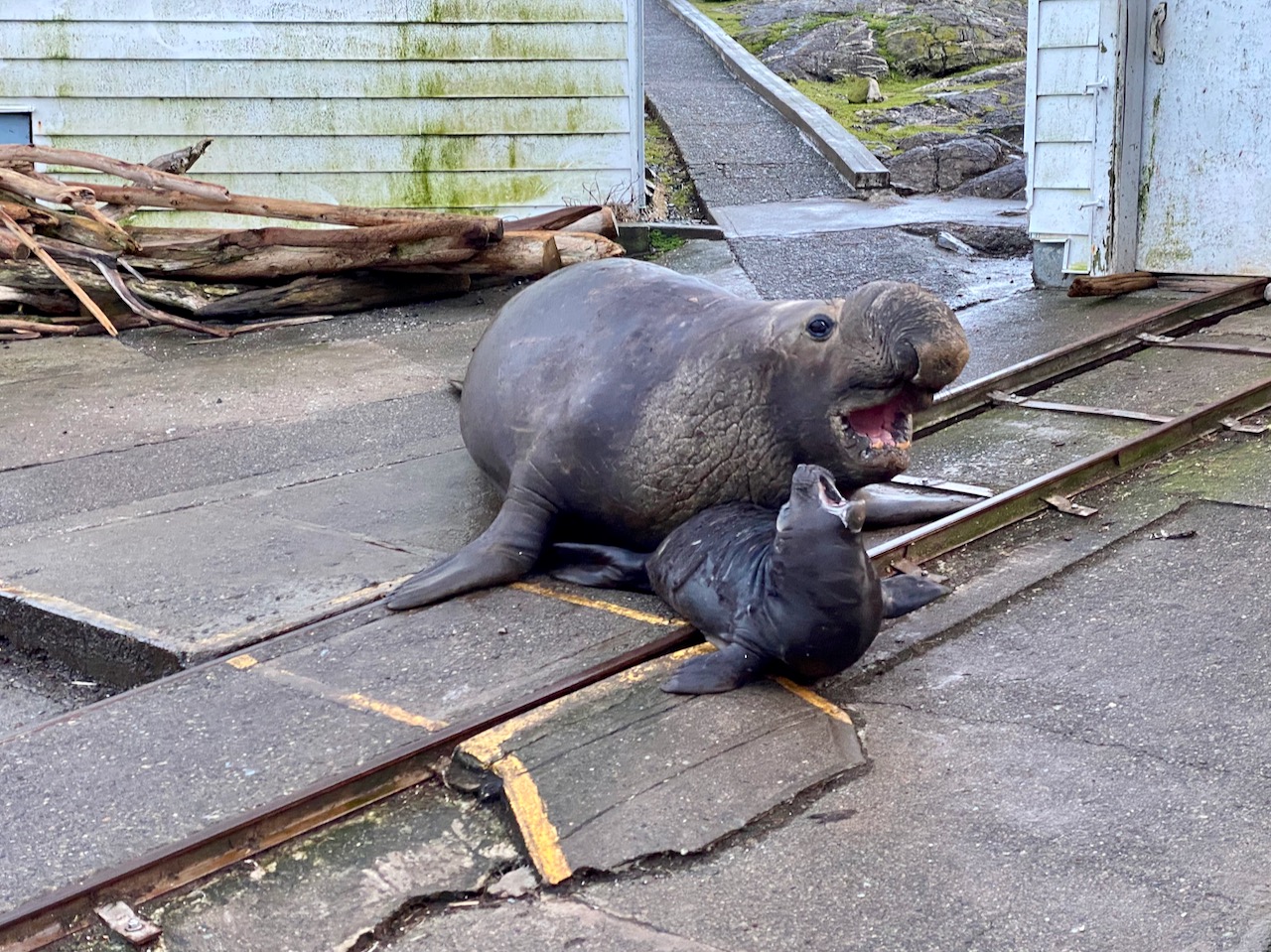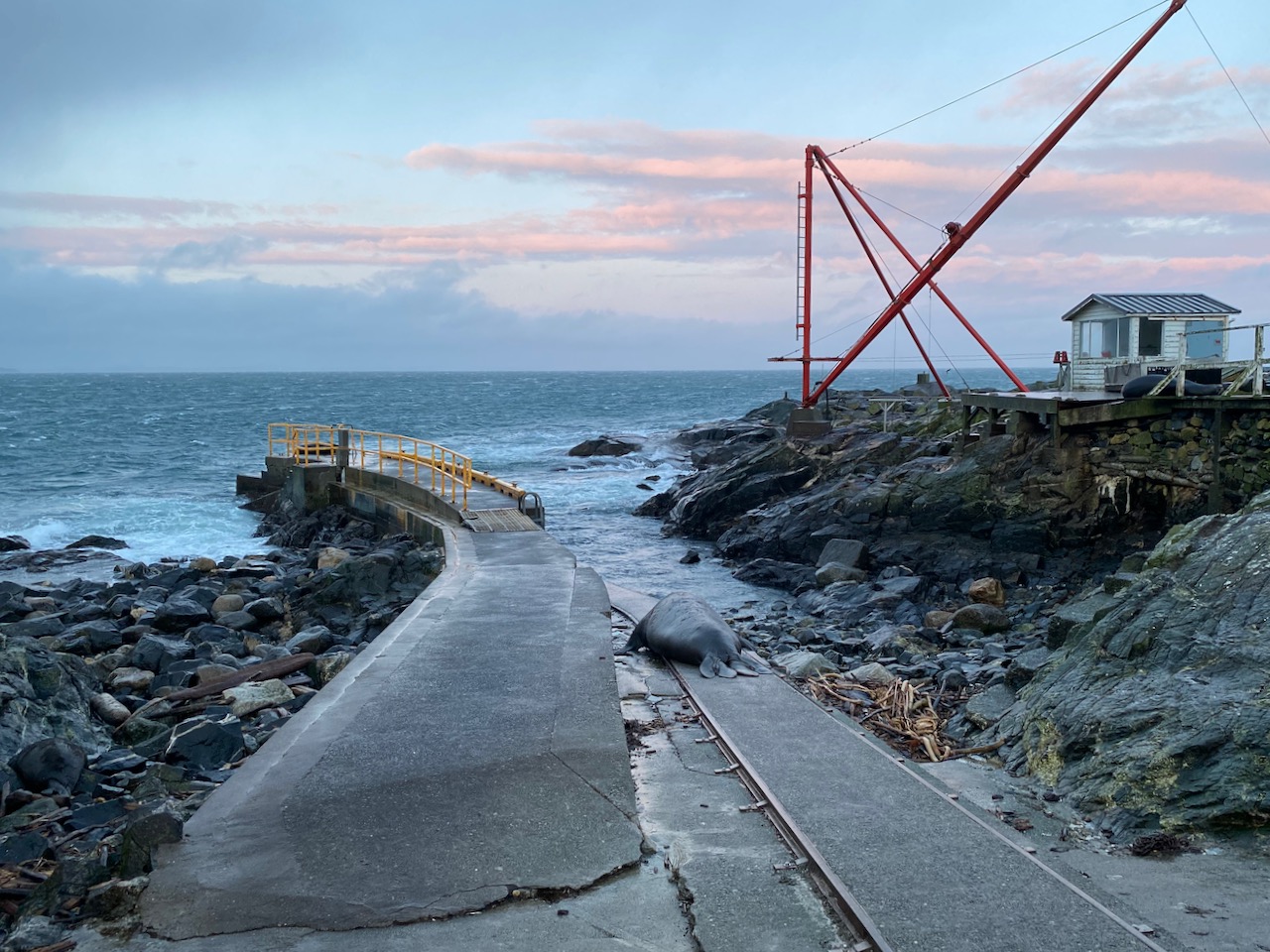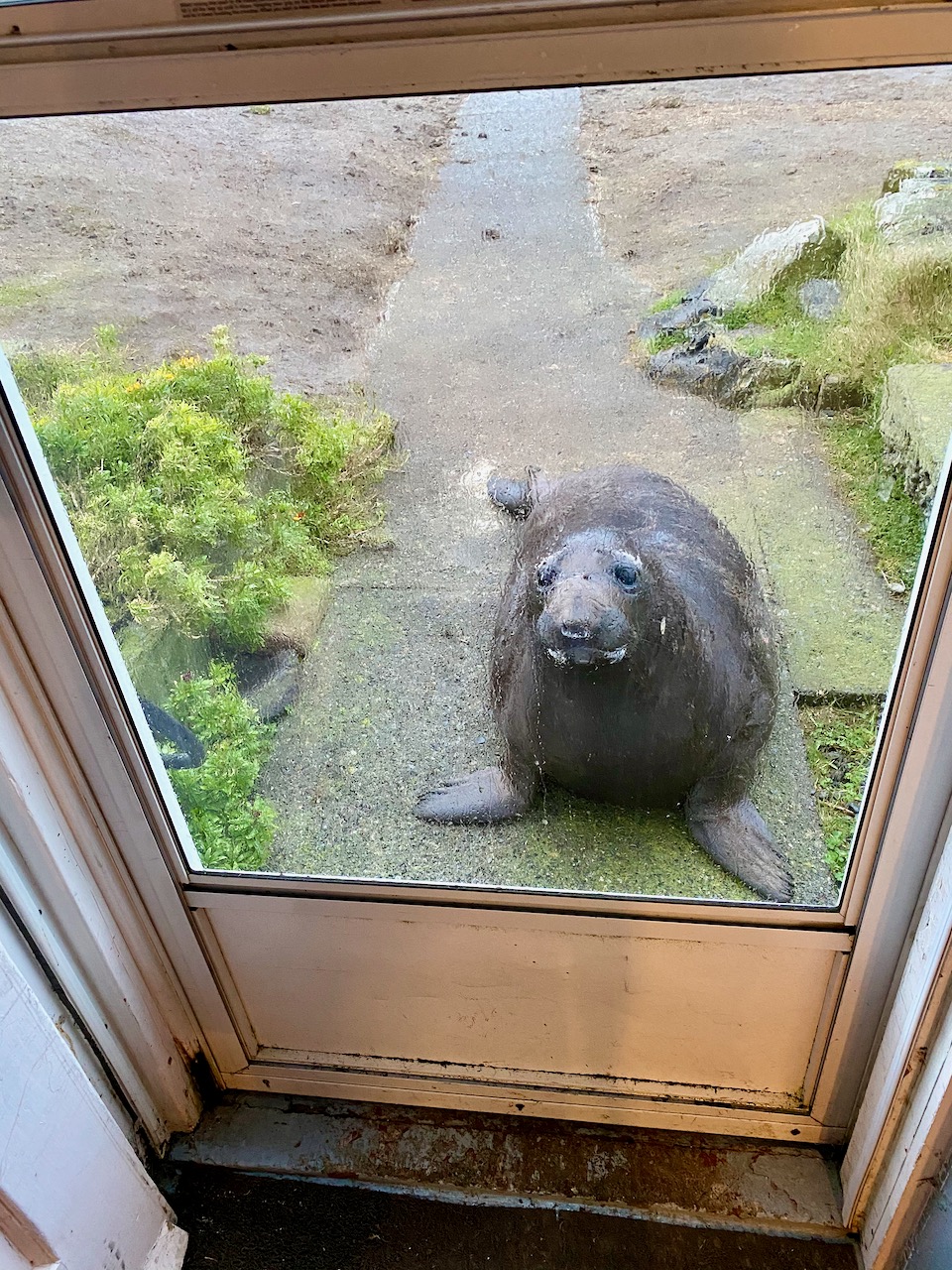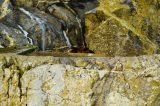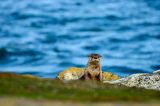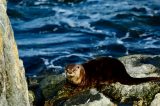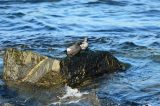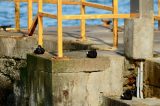Wind: yesterday 0-11 knots from N to NE, today 17-36 knots from W
Sea State: yesterday rippled, today chop up to 1 m
Visibility: yesterday 5-15 NM, today 10-15 NM
Sky: yesterday overcast and rain, today clear
Temperature: yesterday 5-8 °C, today 7-8 °C
Atmospheric CO2: 413.78 ppm (recorded by NOAA at Mauna Loa Observatory, Hawaii)
In the middle of the day yesterday, a sea otter floated and swam near the south islands. It looked small in comparison to the nearby blimp like harbour seals.
The alpha male elephant seal left the island at some point last night. As of the sunset this evening, he hadn’t returned. The elephant seal pups have spread out from where they spent the past few days, near the bushes in the middle of the island. For most of the day, the three pups were sunning themselves on the grass between the science house and the lighthouse.
The gulls and Canada geese are acting more aggressive. The number of gulls is still fairly low, but they are spread out around the islands. I often see them pulling at each other’s wings. Perhaps they are trying to claim the preferred spot. The Canada geese frequently honk and charge at each other with their necks horizontal.
Many of the daily tasks involve keeping the human life sustaining systems running. I spent a couple hours each of the past two days preparing firewood for next winter. All winter, I have been collecting logs that wash ashore on the boat ramp. I rebuilt the chainsaw cutting jig, got suited up in the chainsaw safety gear and bucked up a lot of logs. The salt will get rinsed off the wood some more in the rain, as the wood waits to be split and stacked in various indoor spaces over the coming months.
Yesterday, four tour boats were in the ecological reserve. Today, there was one tour boat.
- The watcher becomes the watched. A juvenile bald eagle gets an up close look at the human through the big north facing window on the house.
- A sea otter swimming by the south islands, with a few harbour seals looking on from the rocks.
- The sea otter floating on its back, just to the west of the south islands.
- A few hours of chainsawing logs the winter storms delivered to the island. The stored sunshine in these logs will be used to heat the house next winter.




